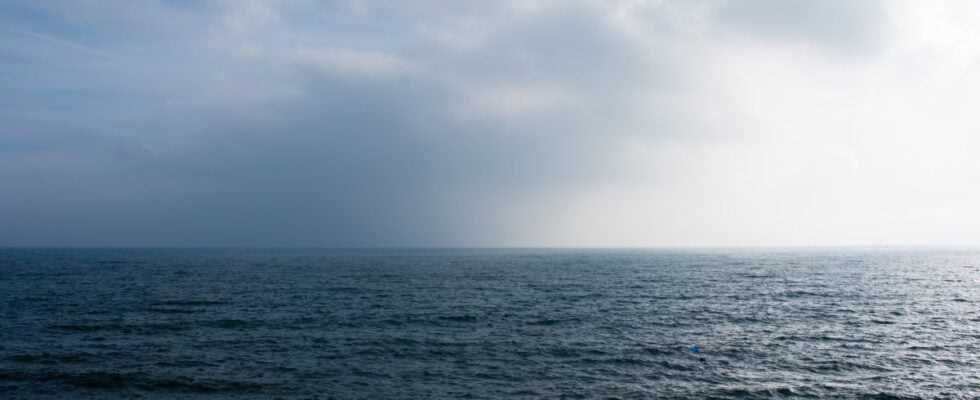The accident happened on January 10, 1992, in the North Pacific Ocean. A container ship heading for the USA from Hong Kong got caught in a severe storm. In strong winds and high waves, several containers of the cargo went overboard. At least one of them opened and poured its cargo into the sea: plastic bathtub animals. Rubber ducks, beavers, turtles and frogs, 29,000 in number.
Treasure trove of data on flow conditions
At this point the story could end, but the really interesting thing only begins here: The bathing animals went on a journey, driven by wind and currents, were washed up on coasts, collected by beach walkers and thus finally became an object of scientific research. Because the places where the bathing animals were found could be used to reconstruct their travel routes and times – and thus gain numerous insights into flow conditions in the oceans.
The information was mainly collected by the American oceanographer Curtis Ebbesmeyer, now retired. A few years earlier he had used a similar ship accident to collect scientific data. More than 60,000 Nike sneakers went overboard and washed up on the west coast of the United States and Canada in the months that followed. He founded a network of beachcombers who reported finds to him. After the rubber duck accident, he received new reports from beach property collectors about the plastic animals found. Their origin could be proven by an embossing of the manufacturer.
“The accident with the bathing animals brought research a real treasure trove of data,” says Johanna Baehr, oceanographer at the University of Hamburg. “In one fell swoop, there were thousands of data points – otherwise we would not simply expose so many scientific measuring devices at once.”
Drifters in marine research for 150 years
Basically, the idea of researching ocean currents with the help of floating measuring devices is not new, on the contrary. “The use of so-called drifters is one of the oldest methods in marine research,” says oceanographer Jörg-Olaf Wolff from the University of Oldenburg. In 1864, for example, the researcher Georg von Neumayer had a message in a bottle thrown overboard of a ship from the then German sea observatory in Hamburg off Cape Horn. In it, the request to the finder to report the location and time back to the researcher. The bottle was later found in Australia. “That was more than 150 years ago and has contributed to a better understanding of large-scale ocean currents.”
Today researchers are using much more precise measuring devices that are equipped with GPS and can record data such as temperature, salinity of the water or air pressure and transmit them to satellites. “There are also free-floating devices that repeatedly sink from the surface to a depth of one and two kilometers and collect data in the process,” says Wolff. In comparison, drifters like the bathing animals provided only very imprecise data. “But that’s better than nothing, especially because the data was generated for free.” Digital measuring devices are expensive and cannot be used in nearly large numbers.
Plastic animals prove model calculations
Where did the rubber animals travel to? The analysis of the find data showed that they initially circled counterclockwise in the circular current of the North Pacific: from Sitka on the Alaskan coast along the Aleutian Islands, past the Kamchatka Peninsula and finally over the Pacific back along the US west coast up to Alaska. In 1994, 1998, 2001 and 2003 Ebbesmeyer received reports of finds from Sitka, which suggests that the animals had made a few rounds in a circle. Others escaped the vortex and made it to Hawaii and Australia.
“Perhaps one of the most exciting discoveries is that the bathing animals were driven from the Pacific to the North Atlantic,” says Baehr. “Corresponding models have predicted this, but the animals have shown: ‘This can really happen’.” In fact, specimens were found on the east coast of the United States as well as in Scotland and England in the early 2000s. They had drifted north through the Bering Strait into the Arctic Ocean to Greenland in the North Atlantic – whether frozen in the pack ice or sitting on top of the ice floes is open. “This route was an interesting confirmation that there is a surface current there that covers such a distance,” says Wolff.
Important for waste avoidance and weather models
Since 2016, the ocean researcher from the University of Oldenburg has been investigating in an interdisciplinary team with the help of drifters how garbage is distributed in the North Sea. The researchers threw a total of 65,000 small wooden drifters into the North Sea. These were marked with a number and the request was made to report found objects with details of the place and time. One of the surprising results of the project: the flow conditions in the North Sea can reverse under certain conditions. “We suddenly received reports from England. It was clear that the wooden drifters were no longer driven counterclockwise as usual, but clockwise,” says Wolff. “You didn’t know that beforehand.”
Studies like this could help to better understand the spread of plastic waste and to develop concepts for preventing it. Studies with drifting measuring devices can also provide important on-site data for the development of weather models. “This can ultimately improve the weather forecast or, against the background of climate change, the forecasts for the coming decades,” says Baehr.

The current fate of plastic animals is unclear. “I don’t think any of them are still on the way. 30 years of wind, waves and UV radiation have made the plastic brittle, and they have probably crumbled into microplastics,” says oceanographer Wolff. Johanna Baehr, on the other hand, cannot rule out the possibility that one or the other duck does not appear somewhere, for example from the ice. “The rubber ducks have an alarmingly long shelf life, like all plastic that ends up in the sea.”
(tiw)
